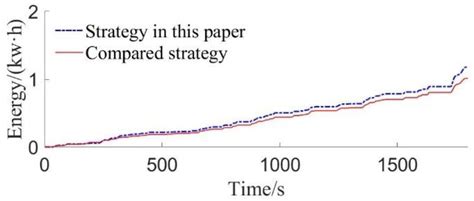Maximize workout efficiency for peak strength & energy gains?

Unlock Your Full Potential: The Science of Efficient Training
In the pursuit of peak strength and boundless energy, simply working out hard isn’t enough. The true game-changer lies in working out smart. Maximizing workout efficiency means getting the most significant returns from every minute you invest in the gym or during your training sessions. It’s about strategic planning, meticulous execution, and holistic recovery, all tailored to accelerate your progress and elevate your overall physical capacity.
This article will guide you through the principles and practices that transform good workouts into great ones, ensuring that your efforts translate directly into measurable gains in strength and sustained energy levels.
Strategic Planning and Progressive Overload
The cornerstone of efficient training is a well-structured plan. Random workouts often lead to random results. A coherent training program, based on principles like periodization, ensures you systematically challenge your body, allowing for adaptation without overtraining. Progressive overload—gradually increasing the demands on your muscles—is non-negotiable for strength gains. This could mean lifting heavier weights, performing more repetitions, increasing training volume, or reducing rest times. Consistent application of progressive overload signals to your body that it needs to get stronger.

Furthermore, understanding the principle of specificity means choosing exercises that directly contribute to your goals. If strength is your aim, compound movements like squats, deadlifts, presses, and rows should form the bedrock of your routine, as they engage multiple muscle groups and joints, yielding superior strength and energy expenditure compared to isolation exercises.
Mastering Execution: Form, Intensity, and Mind-Muscle Connection
Proper form is paramount. Lifting heavy with poor form is a recipe for injury and inefficient muscle activation. Prioritizing perfect technique over ego lifting ensures that the target muscles are truly stimulated, leading to more effective strength adaptation and reducing wasted energy. This also enhances the mind-muscle connection—the conscious effort to feel the working muscle contract and relax. A strong mind-muscle connection significantly improves the quality of each repetition, translating to better gains and a more efficient workout overall.

Intensity is another critical factor. Training at the right intensity level—often close to muscular failure for strength goals—sends powerful signals for growth and adaptation. However, intensity must be balanced with adequate recovery to prevent burnout. Incorporating techniques like supersets, drop sets, or pyramid sets can also enhance intensity and workout efficiency, challenging your muscles in different ways within the same time frame.
Fueling Performance: Nutrition, Hydration, and Timing
Your diet is just as important as your training. To maximize strength and energy, your body needs the right fuel. A diet rich in lean proteins supports muscle repair and growth, complex carbohydrates provide sustained energy for workouts, and healthy fats are crucial for hormone production and overall health. Hydration is also non-negotiable; even slight dehydration can significantly impair performance, strength, and energy levels.

Nutrient timing can also play a role. Consuming a balanced meal or snack with protein and carbohydrates both pre- and post-workout can optimize energy availability and recovery. Post-workout nutrition is especially critical for replenishing glycogen stores and providing amino acids for muscle protein synthesis, accelerating the recovery process and preparing you for the next session.
The Crucial Role of Recovery: Rest, Sleep, and Active Regeneration
Muscles aren’t built in the gym; they’re built during recovery. Adequate rest and high-quality sleep are fundamental for strength gains, energy restoration, and overall well-being. During sleep, your body repairs muscle tissue, restores energy reserves, and releases growth hormones essential for adaptation. Aim for 7-9 hours of quality sleep per night.

Active recovery, such as light cardio, stretching, or foam rolling, can also aid in reducing muscle soreness, improving flexibility, and promoting blood flow, which helps in flushing out metabolic byproducts and delivering nutrients to recovering tissues. Integrating deload weeks periodically can prevent overtraining and allow your body to fully recuperate and come back stronger.
Listen to Your Body and Adapt
Finally, workout efficiency is highly personal. What works for one person may not work for another. It’s crucial to listen to your body, recognize signs of fatigue or overtraining, and adjust your routine accordingly. This might mean taking an extra rest day, modifying exercise volume, or even changing your workout split. Regular self-assessment and tracking your progress (e.g., strength gains, energy levels, body composition) allow you to make informed decisions and continually optimize your training approach.

Conclusion: A Holistic Approach to Peak Performance
Maximizing workout efficiency for peak strength and energy gains requires a holistic approach that extends beyond the weights you lift. It encompasses intelligent program design, flawless execution, meticulous nutrition, strategic recovery, and the willingness to adapt. By integrating these principles into your fitness journey, you’ll not only achieve your strength and energy goals faster but also foster a sustainable and injury-free path to a stronger, more energized you. Every smart choice outside the gym amplifies the effectiveness of every hard-earned rep within it.







